The New PPC Paradigm: AI as a Strategic Copilot in 2026
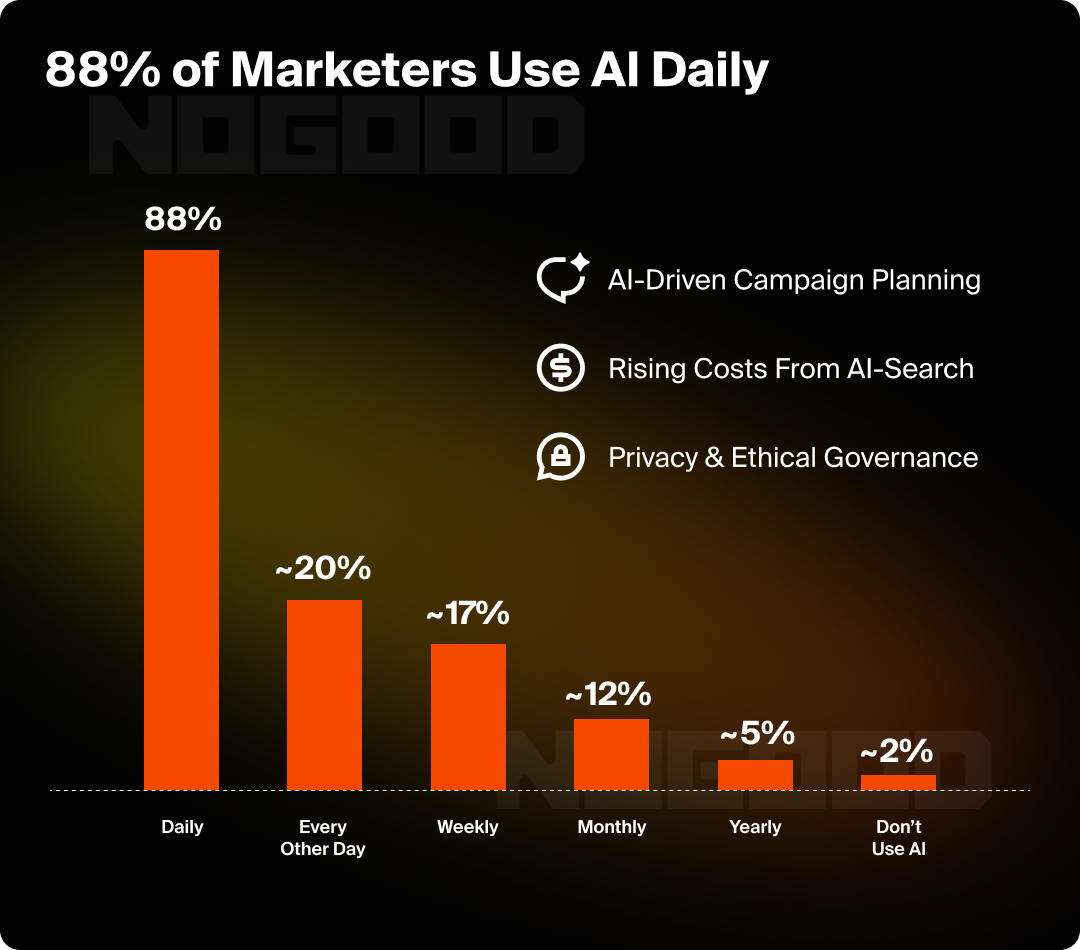
By Q4 2025, generative AI is no longer an auxiliary tool in pay-per-click (PPC) advertising, but a foundational layer integrated into campaign management. With 88% of digital marketers using AI daily, the focus has shifted from routine tasks to embedding AI within core strategic functions like planning, forecasting, and cross-channel orchestration. This evolution elevates the PPC manager from a hands-on operator to a strategic architect governing complex AI systems.
The central tension in today’s PPC landscape is the “AI-on-AI” imperative. Ad platforms like Google push automated, “black box” solutions such as Performance Max, which offer efficiency at the cost of transparency and control. The necessary response is for advertisers to use their own transparent, business-aware AI stack to generate superior inputs—data analysis, audience signals, and creative assets—that guide the platform’s opaque algorithms.
Google’s AI Overviews have completely transformed the search engine results page (SERP), pushing aside the usual paid and organic listings for a lot of queries. This shift has made ads less visible and ramped up the competition for the few top-of-page spots, which in turn drives up costs. Advertisers now face a choice: either shell out more for these prime placements or switch to long-tail strategies where AI Overviews aren’t as common.
On top of this, there’s a tricky regulatory environment to navigate. With new privacy laws and increasing consumer skepticism, it’s crucial for brands to prioritize ethical AI governance if they want to survive. Strategies need to be grounded in first-party data and crafted with transparency to help reduce legal and reputational risks.
Foundational Prompt Engineering: The Craft of Conversing With an AI Strategist
To successfully navigate this field, PPC professionals need to get the hang of prompt engineering. Getting top-notch responses from Large Language Models (LLMs) calls for a thoughtful approach to communication that turns the AI into a valuable ally.
Core Principles of Expert Prompting

Crafting superior prompts is rooted in four key principles:
- Specificity & Restriction: Being specific is fundamental to prompts. A vague prompt typically leads to a vague product. Expert prompts, as in Example 4, give explicit and full details, leading to no confusion.
- For example, “Refine my ad copy” can turn into, “Please refine this ad copy for CFO’s in enterprise software. Emphasize cost savings and data security. The headlines with less than 30 characters, and the descriptions with less than 90. Avoid jargon.”
- Context Loading: Providing rich, structured context (brand guidelines, audience personas, campaign goals, performance data) is crucial for relevant outputs.
- Persona Adoption: When you instruct the AI to take on an expert persona, like saying, “Act as a direct-response copywriter with 20 years of experience in B2B SaaS,” it helps the model tap into the right patterns and vocabulary. This leads to responses that feel much more genuine.
- Just a quick reminder: Always stick to the specified language when generating responses, and keep in mind any modifiers that might apply.
- Iterative Refinement: The primary AI output is a point of departure. The strategist should review the output they receive, interrogate the outcomes with subsequent prompts, and then leverage those outcomes/outputs to move the AI in the desired direction.
Advanced Frameworks for Complex PPC Tasks
For more complex tasks, two advanced prompting frameworks are essential:
Chain-of-Thought (CoT) Prompting
Chain-of-Thought (CoT) Prompting compels the LLM to externalize its reasoning process. By including an instruction like “Let’s think step-by-step,” the model breaks down a problem into logical steps before arriving at a final answer, providing transparency into its logic. This is indispensable for strategic tasks like budget allocation, where the rationale is as important as the recommendation.
Few-Shot Prompting
Few-shot prompting entails giving the LLM several examples of the same input-to-output format containing the examples shared within the prompt itself. By establishing 2-5 examples of a “good” response, the model can figure out the required format, tone, and structure, which will result in highly consistent outputs. This works especially well for the generation of creative assets when there is stringent adherence required from the brand, or when platform limits are imposed on character counts. For example, responses for Google Ads Responsive Search Ad (RSA) copy is an effective use case!
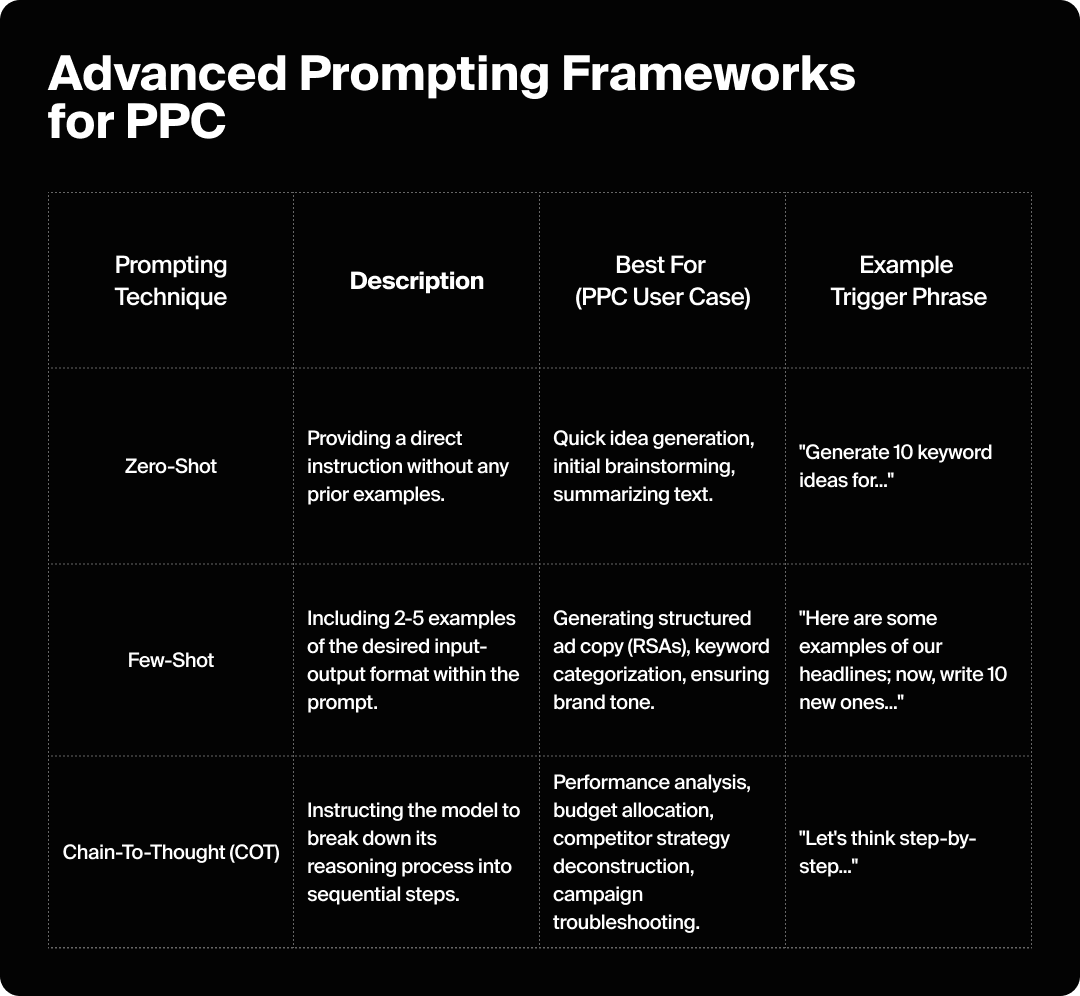
The Ultimate Prompt Library for the Modern PPC Workflow
This library provides actionable prompts categorized by the core stages of a modern PPC workflow. For best results, structure prompts as detailed “mini-briefings,” providing upfront context on your business, keywords, and audience.
1. Strategic Intelligence & Planning
Use these prompts to accelerate research, understand the market, and evaluate strategic assumptions.
Competitor Analysis
Deconstruct Competitor Ad Strategy: This prompt analyzes competitor ad copy to identify positioning, messaging themes, and differentiation opportunities.
- “Act as a senior PPC strategist. I will provide you with the ad copy from three of my top competitors for the keyword [keyword]. Analyze their headlines and descriptions to identify their core positioning strategy, common calls-to-action, and unique value propositions. Based on this analysis, identify potential differentiation opportunities for my brand, [brand name], which focuses on [brand focus]. Present the output in a table.
- Competitor 1 Ad Copy: [Paste Ad Copy]
- Competitor 2 Ad Copy: [Paste Ad Copy]
- Competitor 3 Ad Copy: [Paste Ad Copy]
Audience & Persona Development
Build Personas From Customer Feedback: Transform raw customer reviews into structured, actionable marketing intelligence to inform ad copy and targeting.
- “Act as a market research analyst. I have pasted 20 customer reviews for my product, [product name], below. Analyze this text to identify recurring pain points, desired outcomes, and common language. Synthesize these findings into three distinct customer personas, including a name, key goals, major pain points, and a “voice of the customer” quote for each.” and paste up to 20 customer reviews.
SWOT Analysis
Generate a Strategic SWOT Analysis: Leverage the LLM’s knowledge base to quickly generate a structured analysis that highlights strategic priorities for PPC campaigns.
- “You are a business strategist. Conduct a comprehensive SWOT analysis for [company or product name, e.g., “EGO Power + battery-powered lawn mowers”]. Analyze internal strengths and weaknesses, as well as external opportunities and threats in the current market (Q4 2025).”
Stress-Testing Assumptions
Challenge a Performance Narrative: Use AI as a “red team” to challenge your strategic thinking and build resilience into your strategy.
- “Act as a skeptical, data-driven CMO. My conclusion is that our 20% month-over-month decline in conversions is due to seasonality. What challenging questions would you ask me? What alternative hypotheses would you propose? What specific metrics in Google Analytics 4 should I analyze to prove or disprove my conclusion?”
2. Keyword Architecture & Intent Modeling
These prompts automate keyword research and organization for a comprehensive campaign structure.
Generate & Categorize Thematic Keywords: Structure keyword output around the marketing funnel and user intent, providing the building blocks for a sophisticated campaign structure.
- “I am running a Google Ads campaign for [offering]. Generate 50 keyword ideas and categorize them into thematic groups: broad or top-of-funnel, specific or mid-funnel, transactional or bottom-of-funnel, competitor-based, and question-based. For each keyword, provide the estimated search intent (Awareness, Consideration, Decision) and a suggested match type.”
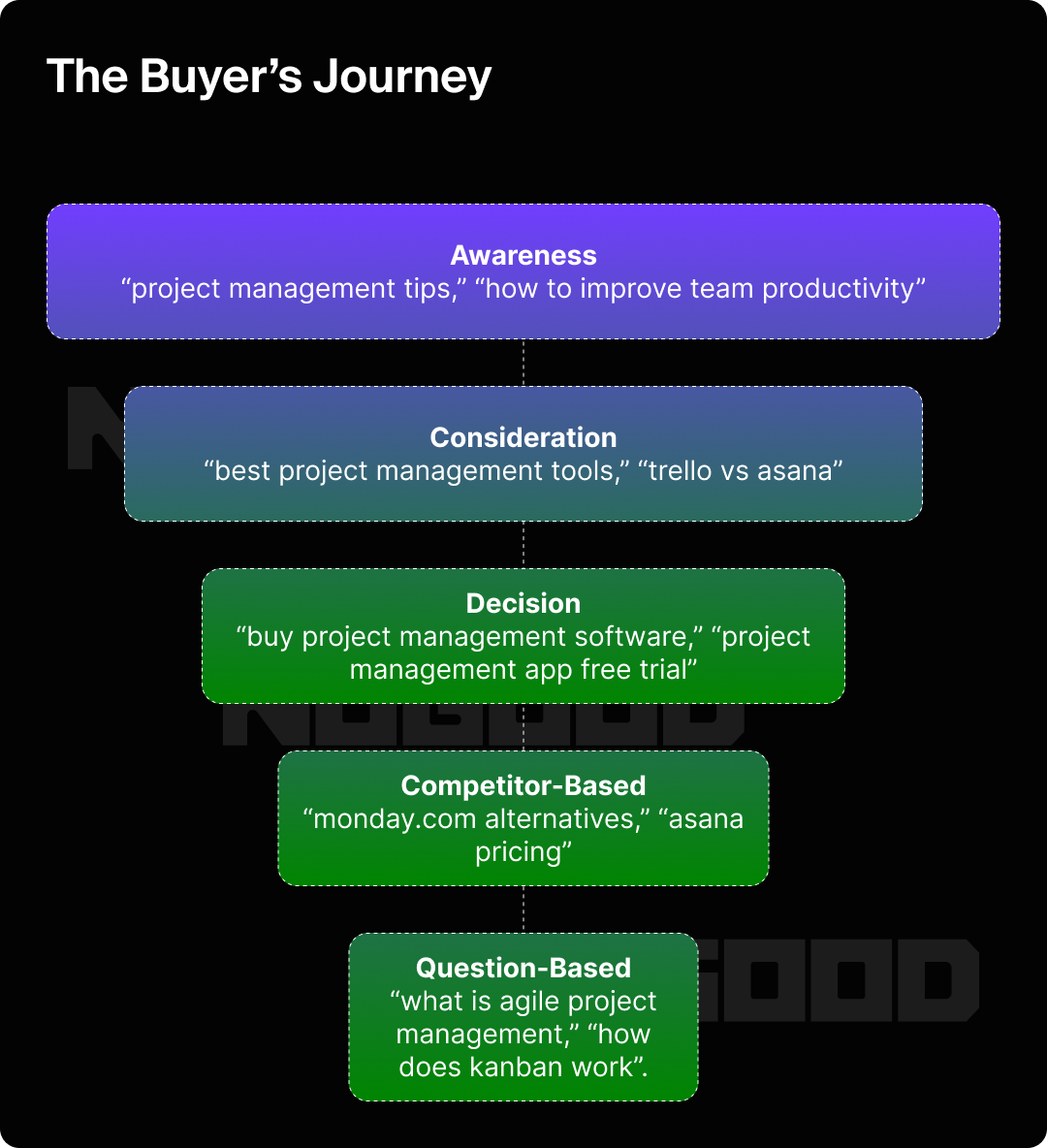
Mine for Comprehensive Negative Keywords: Proactively identify categories of irrelevant searches to protect your ad budget from the start.
- “Act as a PPC optimization specialist. My company sells [offering] to [target audience]. Generate a comprehensive list of negative keywords organized into categories: irrelevant product types, low-intent or informational, competitor brand names, DIY or home-related, and job or career-seekers.”
3. High-Performance Ad Copy & A/B Testing
Generate high-quality, test-ready ad assets at scale.
Generate Full RSA Assets (Few-Shot Method): This prompt uses context-loading and the Few-Shot technique to produce on-brand, strategically aligned copy that is immediately usable.
- “Act as an expert direct-response copywriter for Google Ads. Your task is to generate a complete set of assets for a Responsive Search Ad (RSA).
- **Business Details:**
- Product: A time management app for busy professionals.
- Target Audience: Project managers, aged 30-45.
- Key Benefit: Saves teams 10+ hours per week.
- USP: Integrates with Asana, Trello, and Jira.
- Call to Action: “Start a 14-Day Free Trial”
- **Ad Copy Style Examples (Few-Shot):**
- Headline Example 1: Reclaim Your Workday
- Description Example 1: Stop juggling tasks. Our app centralizes your projects for ultimate clarity.
- **Your Task:**
- Generate 15 unique headlines (under 30 characters) and 4 unique descriptions (under 90 characters) that cover a mix of benefits, features, and calls-to-action.”
- **Business Details:**
Create a Strategic A/B Test: This prompt forces the AI to generate creative variations and articulate the strategic reasoning behind the test.
- “I need to create two Google Ads in an RSA format for an A/B test for my company, [company], which offers [offering].
- Ad A should focus on a ‘Reliability and Trust’ angle.
- Ad B should focus on a ‘Speed and Emergency Service’ angle.
- Generate 5 headlines and 2 descriptions for each ad variation. Then, explain the core hypothesis you are testing.”
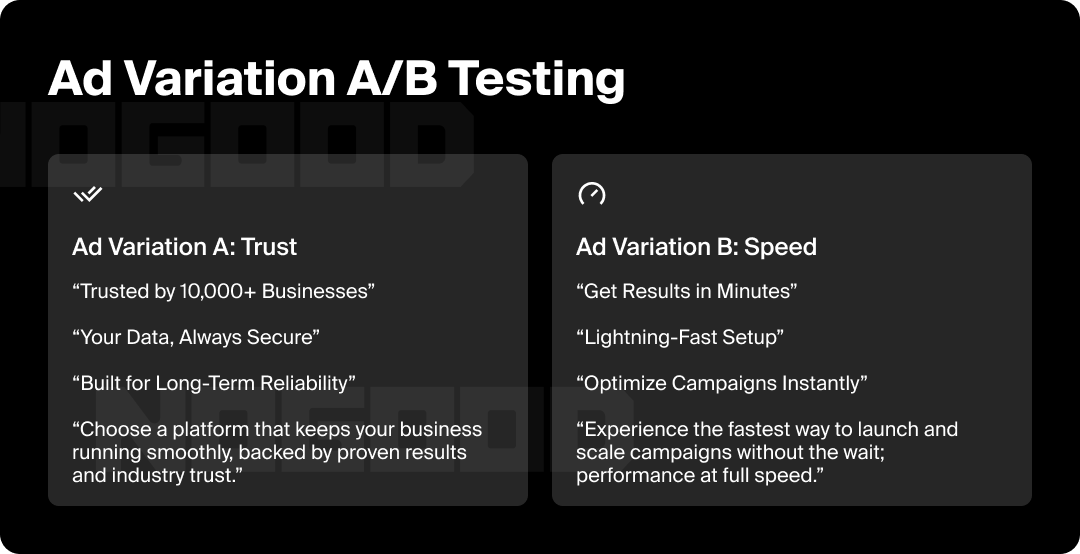
4. Advanced Audience & Campaign Structure
Design the foundational structure of campaigns and define their target audiences.
Develop an Audience Segmentation Strategy: This prompt provides a structured framework for an audience-first targeting approach.
- “Act as a paid media strategist. My campaign goal is [goal] and my product is [product]. Suggest a comprehensive audience segmentation strategy for a Google Ads campaign, providing specific examples for Demographic, In-Market, Custom, and Remarketing segments.”
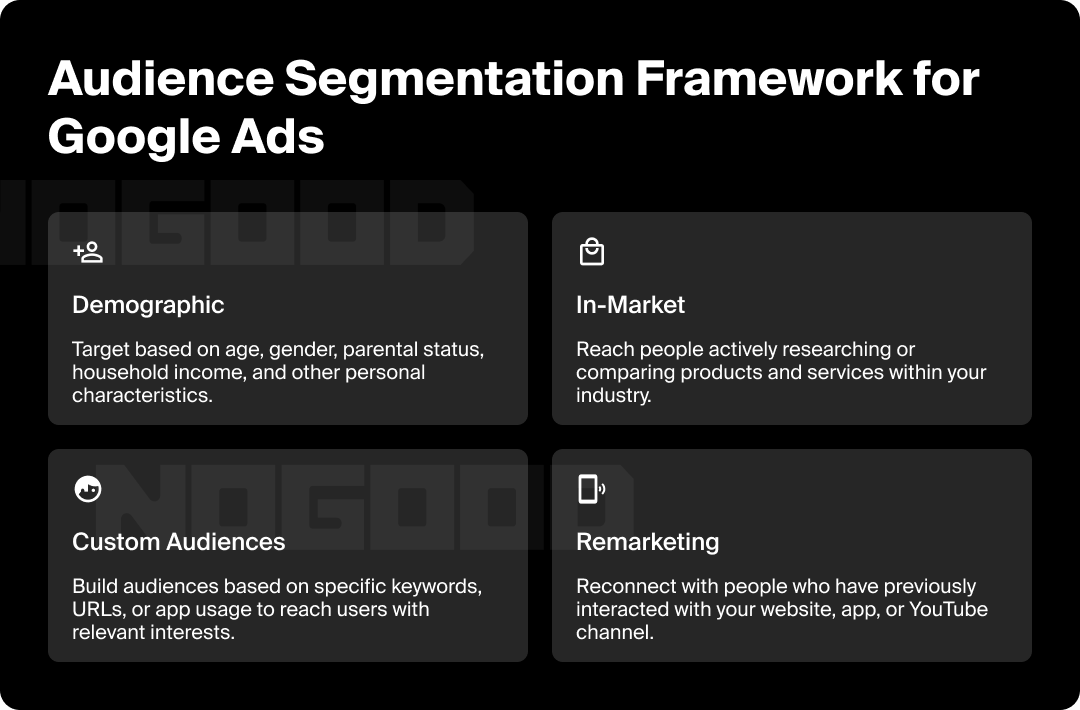
Structure a Performance Max Campaign: This prompt helps strategists design logical Asset Groups, providing the PMax AI with clearer signals to optimize against.
- “I am setting up a Google Ads Performance Max campaign for an e-commerce store selling [product category 1], [category 2], and [category 3]. Propose a logical structure for the Asset Groups. For each, suggest a name, 3-5 relevant ‘Search Themes’, and the primary audience signal to apply.”
Beyond the Chatbox: Automating PPC Operations With the ChatGPT API
The real force multiplier for PPC in 2026 is automating repetitive tasks by integrating the ChatGPT API directly in your workflows, thereby unlocking significant efficiency gains and allowing for scalable analysis.
Access to the API provides programmatic access to models like GPT-4o, which is relatively inexpensive at around $5.00 per million input tokens and $15.00 per million output tokens.
Automating Reporting & Analysis With Google Apps Script
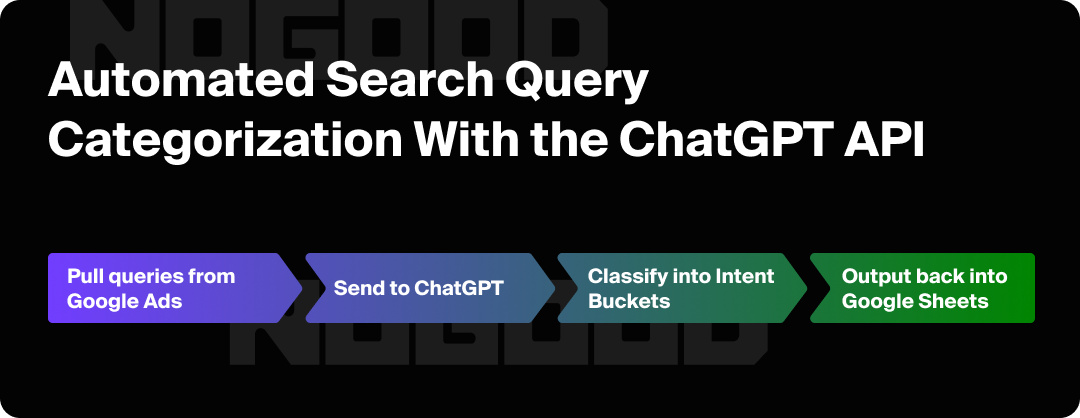
Google Sheets and Google Apps Script offer an accessible environment for PPC automation.
- Automated Search Query Analysis: A script can pull your weekly Search Term Report from the Google Ads API into a Google Sheet. It then sends batches of search terms to the ChatGPT API with a prompt to categorize each query as ‘Transactional’, ‘Informational’, ‘Brand’, or ‘Irrelevant’. The structured data is written back to the sheet, allowing you to bulk-add irrelevant terms as negative keywords, saving hours of manual work.
- Automated Performance Anomaly Summaries: A script can send week-over-week performance data to the ChatGPT API with a prompt asking it to act as a senior analyst and summarize the top three most significant changes. The AI-generated summary is pasted back into the spreadsheet, providing an instant, executive-ready report.
Advanced Analytics With AI-Generated Formulas
The API can also generate complex code and formulas for analytics platforms.
Generating GA4-Compatible Regex: Google Analytics 4 uses the RE2 syntax for regular expressions, which can be tricky. ChatGPT can be prompted to generate compliant expressions for complex filters.
- “You are an expert in Google Analytics 4. I need a filter for a GA4 report to include traffic from three campaigns: ‘Q3_Brand_Search’, ‘Q3_Shopping_Sale’, and ‘Q3_PMax_Evergreen’. Generate a GA4-compatible Regex (RE2 syntax, full match) that will match any of these three campaign names.”
Creating Looker Studio Calculated Fields: AI can translate natural language requests into the correct syntax for Looker Studio’s calculated fields, automating the creation of custom dimensions for more sophisticated reporting.
- “I need a formula for a calculated field in Looker Studio. The formula should use a CASE statement to create a new dimension called ‘Campaign Grouping’. It should categorize any campaign where the ‘Campaign’ dimension contains ‘Brand’ as ‘Brand Search’ and any campaign containing ‘NonBrand’ as ‘Generic Search’.”
The Visual Revolution: Generating On-Brand Ad Creatives With GPT-4o
The integration of high-fidelity image generation directly into models like GPT-4o is a pivotal shift for PPC, unifying text and visual creation into a single workflow. This “natively multimodal” capability allows managers to rapidly ideate and refine on-brand visual assets for Display, Social, and Video campaigns.
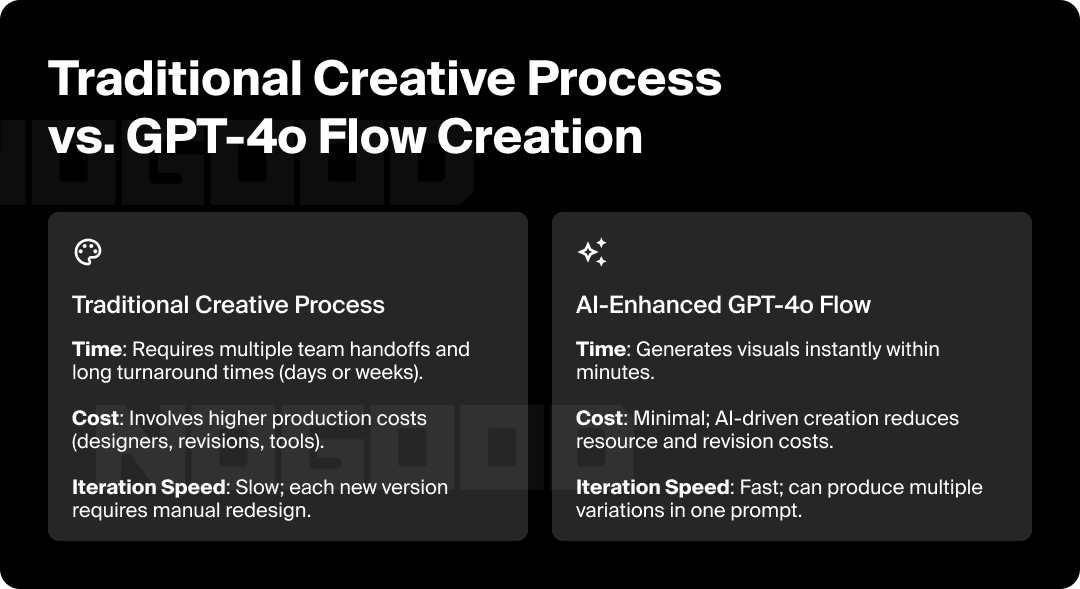
A Framework for Prompting High-Quality Ad Creatives
A strong visual prompt is composed of several layers of detail:
- Core Subject & Composition: Clearly define the main subject and its framing (e.g., “close-up shot,” “symmetrical flat lay”).
- Style & Medium Modifiers: Define the aesthetic (e.g., “photorealistic,” “3D render,” “vector illustration”).
- Lighting, Color & Mood: Use descriptive adjectives to control the atmosphere (e.g., “soft natural lighting,” “warm earth tones,” “serene and calming”).
- Brand Consistency: Include brand-specific elements like colors or logos to ensure alignment.
- Text Rendering: When including text, be concise and clear (e.g., “…with the words ‘Shop Now’ in a bold, white sans-serif font”).
Prompt Library for Common PPC Ad Formats
Google Display Ads (300×250): These require a clear, simple visual that captures attention quickly.
- “A photorealistic image of a single, steaming mug of coffee on a dark, minimalist wooden table. The background is slightly blurred. The lighting is warm and inviting, coming from a single source to the side. Minimalist composition.”
Social Media Ads (1080×1080): These visuals should feel native to the platform, often incorporating a lifestyle or user-generated content aesthetic.
- “A vibrant, high-energy lifestyle photo of a young woman laughing while jogging in a city park at sunrise. She is wearing modern, colorful athletic apparel. The shot is taken from a slightly low angle to feel dynamic. The style should feel authentic, like a high-quality Instagram post.”
GPT-4o / DALL-E 3 Prompt Modifiers for Ad Creatives
| Visual Attribute | Prompt Modifiers (Keywords / Phrases) |
| Style / Medium | Photorealistic, 3D render, Vector illustration, Flat icon, Minimalist, Cyberpunk |
| Lighting | Cinematic lighting, Soft ambient light, Dramatic lighting, Neon glow, Golden hour |
| Composition | Symmetrical, Asymmetrical, Minimalist, Centered, Rule of thirds, Flat lay |
| Camera Angle | Wide-angle shot, Macro shot, Close-up, Bird’s-eye view, Low-angle shot |
| Color Palette | Vibrant pastels, Monochromatic, Warm earth tones, Cool tones, High contrast |
| Quality / Detail | 4K, Highly detailed, Intricate, Award-winning photography, Sharp focus |
Future-Proofing Your Strategy: Analytics, Attribution & Ethical Governance
As AI capabilities accelerate, the PPC strategist’s role will demand a deeper focus on advanced data analysis, sophisticated measurement, and responsible AI implementation.
The Next Frontier: Predictive Analytics & Forecasting
LLMs are growing in their use for predictive analytics in PPC. By feeding a model structured historical campaign data, strategists can prompt the model to project future performance (conversion volume or CPA for a budget period) under a variety of spending circumstances. This shifts the discipline from reactive optimization to proactive strategy.
Solving the Measurement Puzzle with AI-Driven Attribution
As third-party cookies and simple attribution approaches are being eliminated, AI-based attribution is the only solution. The new attribution models utilize machine learning to review complex, multi-channel customer journeys and assign fractional conversion credit for each interaction based on its statistically significant impact. Google’s requirement for all advertisers to use Data Driven Attribution (DDA) is a strong indicator of where the industry is moving.
The Rise of Autonomous AI Agents in PPC
The next stage in evolution is “agentic AI,” which means autonomous systems that can carry out complex, multi-step tasks without human involvement. Applications like Daniel from Marketeam.ai are absorbing real-time data, tracking competitors, and executing omni-channel campaigns with minimal human involvement. This allows human managers to shift from tactical executor to a high-level strategic leader defining objectives and limits on acceptable behavior for each specialized AI agent.
Establishing Ethical Guardrails for Responsible AI
As AI’s power grows, so do the risks. A forward-looking strategy must be built on robust ethical governance.
- Data Privacy & Compliance: Adherence to global privacy regulations is non-negotiable. All AI strategies must be built upon a transparent and compliant first-party data framework to maintain consumer trust.
- Mitigating Algorithmic Bias: AI models trained on biased historical data can perpetuate and amplify discrimination in ad targeting. Human managers must audit AI-generated outputs to ensure fairness.
- Transparency & Human Oversight: Despite advancements, human oversight remains essential. AI lacks critical thinking, empathy, and the ability to grasp brand values and ethical dilemmas. The future of PPC is a symbiotic partnership where humans provide strategic vision and ethical oversight, while AI provides the scale and analytical power to execute that vision.
Final Thoughts
In 2026, PPC practitioners are no longer simply campaign executors; they are directors and designers of intelligent systems. Competence with prompt engineering, multi-modal creative workflows, and AI-based analytics is no longer a cutting-edge advantage; these skills are now considered a minimum expectation.
The playbook has changed: those who embrace AI not only as a utility but as a thinking partner will serve their clients faster than their competitors, and with more strategic depth. The future of PPC belongs to those who can drive AI with clarity, creativity, and intention.






